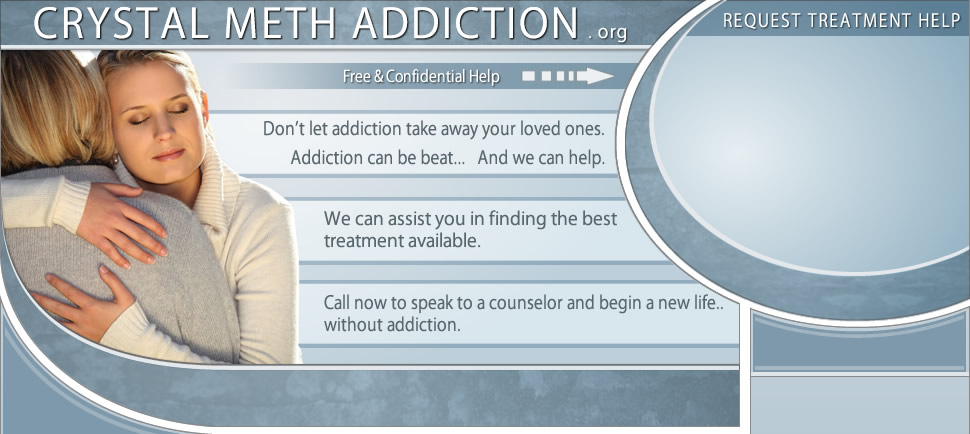Crystal Meth Help
Crystal Meth Effects and Symptoms
- Crystal Meth Effects
- Crystal Meth Withdrawal Symptoms
- Crystal Meth Symptoms
- Crystal Meth Side Effects
- Crystal Meth Overdose
- Injecting Meth
- Ingesting Meth
- Smoking Meth
- Meth and HIV
Crystal Meth Information
- Crystal Meth Addiction Treatment
- Crystal Meth Statistics
- Crystal Meth Facts
- Crystal Meth Prices
- Crystal Meth Street Names
- Crystal Meth Pictures
- Crystal Meth User Pictures
- Teen Meth Addiction
- Meth Addiction
- Drug Rehab for Meth Addiction
- Meth Intervention
Crystal Meth News
What is Meth Mouth?
Meth mouth is a term that is commonly used in referring to tooth decay that is characteristic in relation to individuals who are chronic users of methamphetamine. Meth use can often cause teeth to decay so badly, that they can no longer even be salvaged; in these types of instances, dentist are left with little options, and in most cases, there is no choice but to pull the affected teeth. A person who is struggling with a meth addiction can quickly turn an otherwise healthy set of teeth into a mass of chipped grayish-brown broken pieces of enamel, that are no longer fit to chew with; additionally, many of the teeth will often become twisted and rot to the point where they will commonly begin to fall right out of the meth addicts mouth. The above listed traits are commonly reported to be associated with "meth mouth"; although this dental health condition is increasingly being studied within academic circles, it is often quite foreign to many suburban dental professionals. On the other hand, many dentist that have addresses that are located in rural areas where the drug is being readily manufactured in makeshift labs, have reported seeing dramatic increases in the number of "meth mouth" cases that they are treating.
Meth mouth is reported to be distinct from all of the other types of oral damage that is done by other types of drugs; meth use takes an uniquely horrific toll inside the addict's mouth. Many experts believe that meth mouth is directly caused by many of the caustic ingredients that are used to manufacture this toxic illicit stimulant; among some of the most common ingredients are lithium from regular car batteries and the phosphorus that is commonly found in boxed matches.
One thing is for sure, meth mouth is not an attractive sight, as it is often characterized by heavily decayed teeth that are so rotten that they have become gray or black in color. Cases of meth mouth begin to appear throughout rural areas in the United States during the late 1990's. According to a survey that was given to a number of U.S. dentists, the majority of the patients that would come into their offices during the early 2000's consisted mostly young adults who were in their early twenties who had developed a severe methamphetamine addiction. As the drug begin to gain popularity, dentists that were located in all areas of the United States would compare notes with their colleagues to try to determine exactly what was causing this condition.
Finally, after much talk within the dental community over a period of several years, during 2005, the American Dental Association published an article that was related to meth mouth; thus, finally making the definitive distinction between this condition and the tooth decay that commonly occurs in relation to poor dental hygiene. Currently in the U.S. dentist are not required to report cases of meth mouth, so statistics on a state to state level are not available.
Meth mouth can initially begin as the direct result of saliva glands that have slowly become depleted by meth's acidic nature; this occurs when this stimulant, which is derived from hydrochloric acid, has been snorted or smoked. When a person who is using meth ingests the drug by smoking it, the acid based chemical can quickly begin to erode all of the enamel on their teeth. Meth mouth could also be caused in part by the way that the drug often leaves its users feeling dehydrated and having intense cravings; unfortunately, what a meth user will crave most commonly is sweets. When you consider that many addicts, as they become caught up in an addiction, will generally have a total disregard for brushing their teeth; this fact, when combined with the loss of enamel that the acidic nature of the drug creates, and with the almost insatiable craving for sweets, it is no wonder that meth users will often wind up with teeth that are nothing more than tiny black stubs that are filled with decay.
Although scientists are still debating about exactly how meth mouth develops, to some degree, most of the researchers concur that when meth users ingest the drug by way of smoking or snorting it, this commonly sets the stage for teeth to begin decaying rapidly. When a person chooses to ingest meth in these two ways, they are virtually bathing their whole mouth with the acidic chemicals that are commonly used in the methamphetamine manufacturing process. When this acid bath is taking place, the users mouth will begin to dry up, which serves to stop the natural flow of the protective saliva that is usually present; consequently, bacteria in the mouth can begin to explode at up to ten times above normal levels. According to dentist who has done research that is related to the causes of meth mouth, this scenario creates the "perfect storm" under which fast-moving decay and bacteria can move in and ultimately take over a meth user's mouth. Another common cause that is related to the development of meth mouth is that chronic meth users are often anxious and paranoid, so they begin to grind and clench their teeth; it is at this point that a meth addicts teeth can become so weak that they can literally begin to just crumble in their mouth.
One thing that researches that have studied meth mouth do agree upon is that cavities that are caused by meth use form in between two teeth, and then will begin to rapidly spread across all of the enamel in the mouth. Because teeth grinding is such a common occurrence in meth users, it is not uncommon for a meth addicts teeth to eventually just begin to snap right out of their mouth. Meth mouth is particularly common in relation to the prison population; thus, many prisons throughout the United States must allocate a substantial amount of their healthcare budgets to the dental needs of former meth users.

